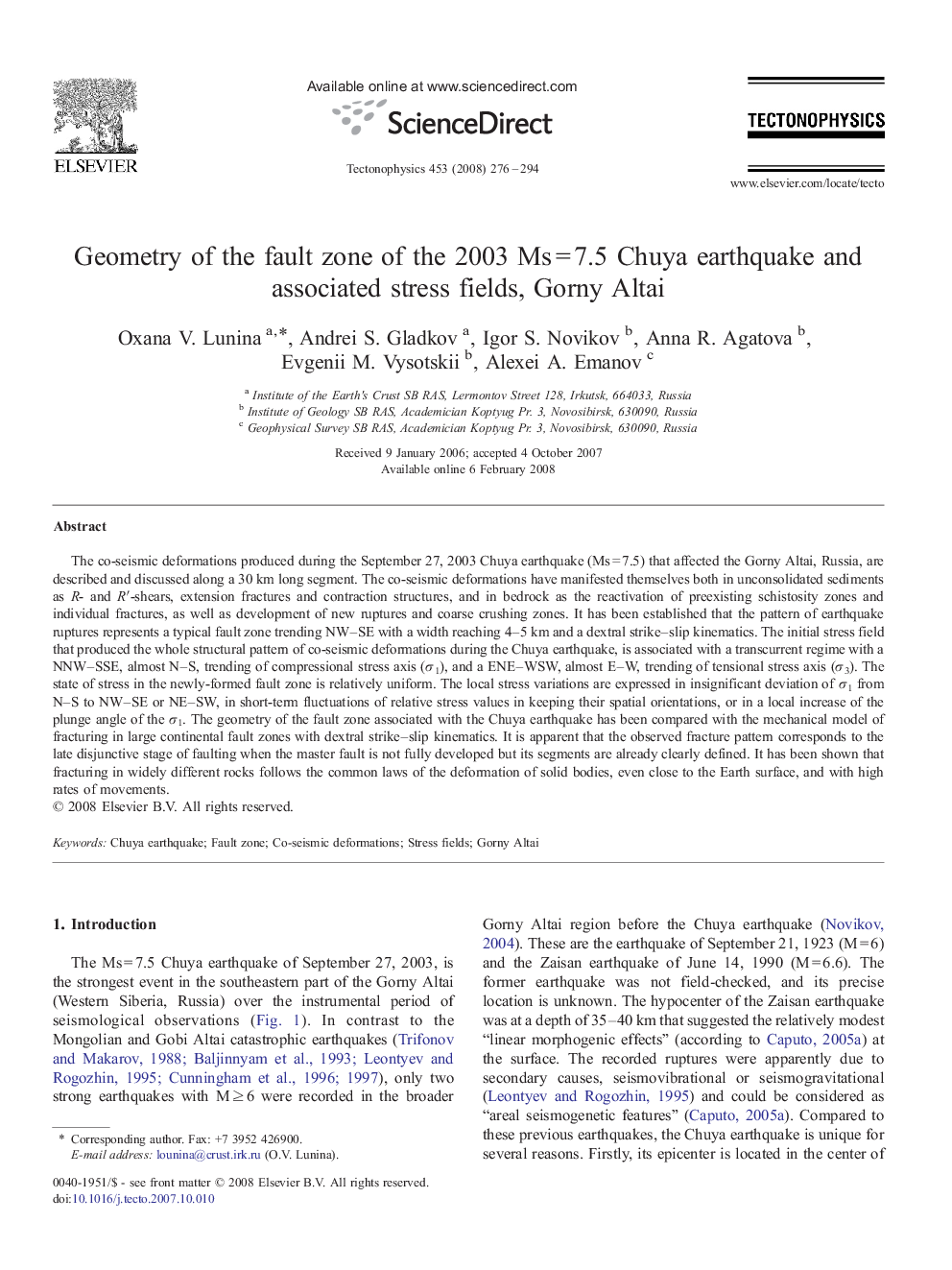| کد مقاله | کد نشریه | سال انتشار | مقاله انگلیسی | نسخه تمام متن |
|---|---|---|---|---|
| 4694544 | 1636914 | 2008 | 19 صفحه PDF | دانلود رایگان |

The co-seismic deformations produced during the September 27, 2003 Chuya earthquake (Ms = 7.5) that affected the Gorny Altai, Russia, are described and discussed along a 30 km long segment. The co-seismic deformations have manifested themselves both in unconsolidated sediments as R- and R′-shears, extension fractures and contraction structures, and in bedrock as the reactivation of preexisting schistosity zones and individual fractures, as well as development of new ruptures and coarse crushing zones. It has been established that the pattern of earthquake ruptures represents a typical fault zone trending NW–SE with a width reaching 4–5 km and a dextral strike–slip kinematics. The initial stress field that produced the whole structural pattern of co-seismic deformations during the Chuya earthquake, is associated with a transcurrent regime with a NNW–SSE, almost N–S, trending of compressional stress axis (σ1), and a ENE–WSW, almost E–W, trending of tensional stress axis (σ3). The state of stress in the newly-formed fault zone is relatively uniform. The local stress variations are expressed in insignificant deviation of σ1 from N–S to NW–SE or NE–SW, in short-term fluctuations of relative stress values in keeping their spatial orientations, or in a local increase of the plunge angle of the σ1. The geometry of the fault zone associated with the Chuya earthquake has been compared with the mechanical model of fracturing in large continental fault zones with dextral strike–slip kinematics. It is apparent that the observed fracture pattern corresponds to the late disjunctive stage of faulting when the master fault is not fully developed but its segments are already clearly defined. It has been shown that fracturing in widely different rocks follows the common laws of the deformation of solid bodies, even close to the Earth surface, and with high rates of movements.
Journal: Tectonophysics - Volume 453, Issues 1–4, 16 June 2008, Pages 276–294